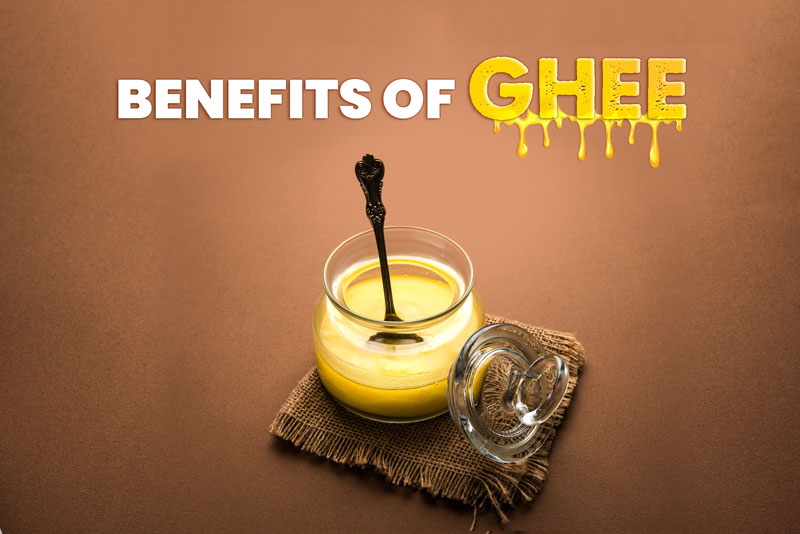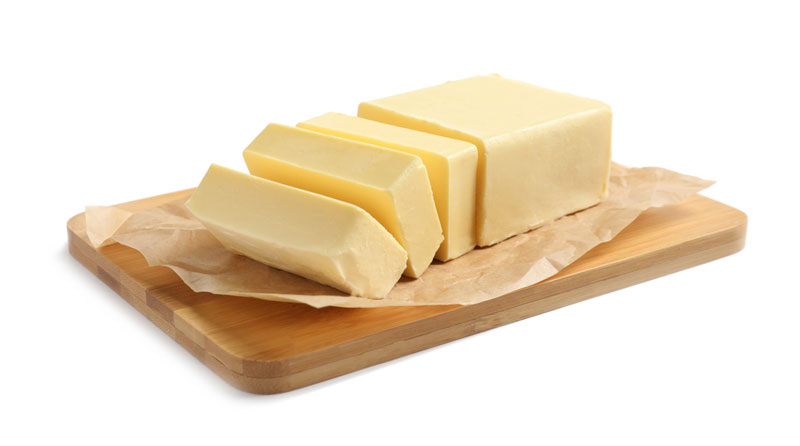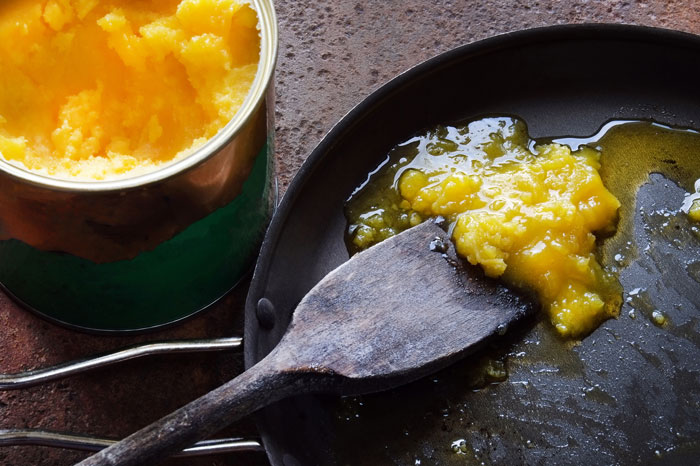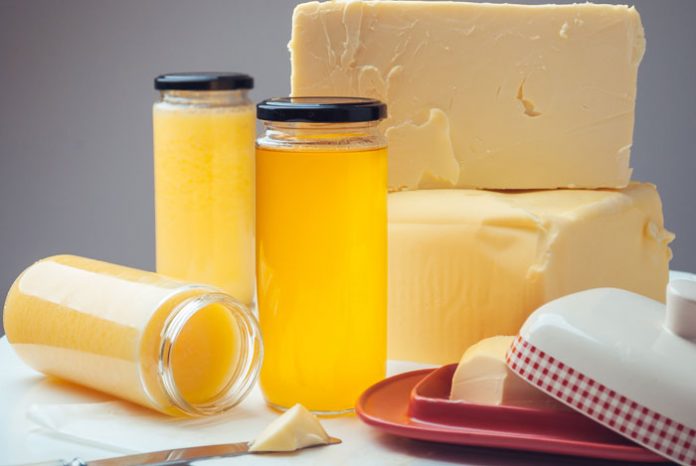Are ghee and butter to be written off our daily diet completely or are they still nutrient rich, asks Dr Nandini Saini
Ghee – called GRITAH in Sanskrit, has long been used in Indian cuisine. We use it to prepare vegetables and sweets, in dals , on Rotis and rice. Our elders swear by its medicinal properties; a tbsp. of ghee is the solution for a variety of ailments like sore throat, colds, constipation.
Butter, especially white, unsalted butter prepared at home, has also been a part of our diet since long.
Our ancient texts and stories show sages using both a part of their diet.
Recent times, however, have had us rethinking and questioning the goodness of both, as well as turning to other oils for cooking. But are ghee and butter to be written off our daily diet completely?
What are they?
Butter – A dairy product made from proteins and fats found in milk and cream. Though cow’s milk is usually preferred, buffalo or goats milk can also be used.
Ghee – Simply put, it is clarified butter, made from milk. It is healthiest when made using white butter obtained from cow’s milk, churned extensively and heated. Though easily available in market, it can also be prepared at home.
How are they prepared?
Butter – Usually made from full cream milk. The milk or cream is churned to separate the fat globules from the buttermilk. The fat is then drained, and salt and coloring added as per requirement. Leaving whole milk undisturbed for few hours will have the cream collect at the top. Commercially, centrifugation is used to prepare the butter.
Ghee – Heating butter on a high flame removes the water and milk solids, leaving behind a yellow liquid, which we call ghee or clarified butter.
Nutritional Info –Below is the nutrition data for one tablespoon (14 grams) of ghee and butter, as per research-
| Ghee | Butter | |
| Calories | 123 | 100 |
| Fat | 14 grams | 11 grams |
| Saturated fat | 9 grams | 7 grams |
| Monounsaturated fat | 4 grams | 3 grams |
| Polyunsaturated fat | 0.5 grams | 0.5 grams |
| Protein | trace amounts | trace amounts |
| Carbs | trace amounts | trace amounts |
| Vitamin A | 13% of the Daily Value (DV) | 11% of the DV |
| Vitamin E | 3% of the DV | 2% of the DV |
| Vitamin K | 1% of the DV | 1% of the DV |
Both contain nearly 100% of calories from fat

Benefits:
Ghee: Ghee is a powerhouse of nutrients and healthy fat. It also has large quantities of fat soluble vitamins, omega 3 fatty acids and CLA, and benefits the body in various ways –
Combats obesity
Contrary to popular belief, a spoonful of ghee daily. Can actually help you lose weight.
A rich source of omega 3 fatty acids, ghee reduces the size of fat cells, and helps burn energy. It is known to promote lean body mass and increase metabolism, even in people who are obese, helping them reduce weight. The linoleic acid present in ghee actively dissolves fat deposits in the body.
Ayurveda says rubbing a little ghee, along with camphor, around the belly button, can help reduce belly fat.
Heart healthy
A high content of Vit A and D as well as linoleic acid, makes ghee heart friendly. Plus, it’s a very good anti-oxidant and helps in the adequate functioning of the heart muscle.
Alternative to lactose products
The entire process of making ghee eliminates all the milk solids, rendering it free from lactose and safe for people who are lactose intolerant.
Aids digestion.
With A high content of Butyric acid (a short chain fatty acid), ghee helps in stimulating the digestive enzymes as well as breaking down food. It promotes growth of pro biotics in the gut. It also helps in cooling down the digestive system, as well as balancing the levels of hydrochloric acid in the stomach.
Keeps you warm from within
Clogged nose / cough
Ghee helps warm you from the inside. It also has soothing properties, and helps lubricate dry, inflamed throats that cough results in.
Improves eyesight
The large quantities of vitamin A present in ghee help in improving and maintaining good eyesight. Traditionally, rubbing the eyes with ghee daily, can improve vision. It also helps keep the eyes moist.
Reduces glycemic index
Ghee helps in metabolizing blood sugar as well as balancing sugar levels in the blood. Diabetics should add a tsp of ghee to their food- it helps control blood sugars by stimulating insulin production.
Reduces constipation
Ghee acts as a natural laxative- a tsp of ghee with warm water has been known to clear the tummy and remove toxins.
Good for skin
Ghee has long been used for skin care- as a moisturizer in cases of dry skin, as and anti-inflammatory in cases of active acne, and as a anti biotic in cases of burns and scars.
Promotes healthy hair growth
Being oily in consistency, it acts as a conditioner when applied to dry hair or a dry, flaky scalp. Its abundant reserves of Vit E and unsaturated fatty acids help in hydrating the locks. Also, the anti-microbial properties ghee possesses make it a good choice to tackle dandruff and flaky skin.
Cures urticarial
Urticaria is an allergic skin reaction of the body, to stress or insect bites. Applying ghee on the urticarial rash alleviates the symptoms. Ayurveda also advises that a tsp of ghee with black pepper, consumed daily, is a permanent solution to this allergy.
Positively affects nervous system
Rich in butyric acid
A rich source of butyric acid, ghee is known to strengthen immunity; it is believed to even combat neoplastic cells.
High content of omega 3 fatty acids
The large quantities of omega 3 and omega 6 fatty acids present in ghee help in reducing the secretion of prostaglandins, which cause inflammation and pain.
Good source of conjugated linoleic acid
Being rich in CLA, ghee lowers high cholesterol, as well as increasing the good cholesterol in the body. CLA also helps in making the muscles stronger and increases body metabolism – helping burn body fat.
Improves reproductive health
It is believed that consumption of a spoonful of ghee, daily, can improve hormonal levels in people. It may also improve the quantity and quality of sperms.
Aids lactation
Ghee has been observed to help lactating mothers, increasing the quantity of milk secreted. It is also very nutritious and helps regulate hormonal balance.
Benefits babies
Possessing anti-microbial as well as anti-inflammatory properties, ghee benefits babies too. High amounts of vitamin A, K and D present in ghee helps strengthen their eyesight and bones. It’s a boon for babies struggling with low weight, known to trigger growth spurts. It also helps soothe irritable skin (such as eczema.)
Anti-aging
The anti-oxidants present in ghee fight the free radicals in the body, and slow down the aging process.
Treats insomnia
Rubbing ghee over the temples is said to reduce insomnia. The calming effect that the ghee and the massage both have, gives good sleep
Importance in Ayurveda:
Ayurveda- the ancient practice of medicine- places ghee as one of the first foods one must have. As per the Ayurveda text Sushruta Samhita, ghee is beneficial for the entire body.
When taken orally, it helps relieve acidity, fevers, headaches, sore throats, corrects hormonal imbalance. It also lubricates the joints.
Applied locally, it promotes faster healing of wounds and burns.
Since it has a tendency to warm you from within, it is used in several winter recipes like carrot halwa, besan laddoos etc.
It is an essential part of diets given to expectant women and new mothers. “Panjiri” – a traditional dish made using dry fruits, flour and sugar, is made using ghee liberally , and fed to women who have just delivered, to help them heal faster, strengthen their bones and body.

Butter
Butter, too, is rich in vitamins, calcium, proteins and trace elements like selenium, and has various benefits, such as –
Reduces chances of carcinomas
A rich source of beta carotene, butter reduces chances of breast and prostatic cancer.
Helps eyes
The vitamin A present in butter helps in strengthening eyesight, as well as keeping it moisturised. It may also help in preventing or at least slowing down the rat of macular degeneration.
Strengthens bones
Butter has large quantities of Vit D and calcium. Both of them help in the growth and development of bones, and help in strengthening them as well. Calcium also prevents osteoporosis, a condition in which bones become weak and easily breakable.
Healthy skin, nails and hair.
Being a rich source of Vit E, butter helps in keeping skin healthy and moisturized. The Vit E also helps faster healing of wounds.
The nutrients present in butter increase the blood flow to the scalp, preventing hair fall, and providing nourishment to the hair follicles.
Weight management
Butter is made of long chain fatty acids, which help in weight loss and weight maintenance. It’s also a rich source of iodine- important for the functioning of the thyroid gland, which helps in metabolism and weight management.
Enhances GIT function
Research shows that normal GIT function requires the presence of certain lipids, which are found in butter. They help in reducing gut infection, promote soft stools and also prevent IBS.
Increases immunity
Butter is rich in saturated fatty acids and anti-oxidants, both of which help in enhancing the immunity system. It’s a natural source of lauric acid, and prevents cancers of certain types.
Prevents oath decay
Being a good source of vitamin K, butter prevents tooth decay and helps in quicker recovery after an injury.
Growth and development
The macronutrients present in butter help in growth and development, especially in children. Butter has also been found to contain protein, riboflavin, niacin, all of which help in the overall growth of the body.
Good for heart and liver.
Studies have found that butter increase the HDL levels in the body, thus protecting the heart from chronic diseases.
It is also rich in choline, and prevents fatty liver disease.
Prevents cancer
The trace amounts of selenium present in butter help release toxins from the body. Also, the CLA in butter prevents growth of neoplastic cells.

The side effects of ghee and butter:
Both butter and ghee are rich in fats, as such, should be consumed in small quantities, especially in cases of known obesity, or people suffering from hyperlipidemia. Excess of either ghee or butter could have adverse effects if a person is suffering from hepatic or nephrotic illness.
A few additional side effects of butter –
Milk allergy and lactose intolerance
Butter contains whey, though in small amounts. As such, people with a known milk allergy should consume butter in small quantities.
The small quantity of lactose present in butter can adversely affect someone with lactose intolerance.
Ghee, on the other hand, does not present with these side effects, as the process of preparing ghee removes these elements from it.
Uses in the Kitchen:
Being rich in saturated fatty acids, both ghee and butter can be used to cook at high temperatures.
Ghee, however, has a much higher smoke point (250®C) than butter (175®C); hence, has a distinct advantage over butter when cooking at very high temperature.
It has also been observed that other cooking oils, such as soya bean oil, produce more than 10 times more toxic substances than ghee or butter, when heated to temperatures above 300 ®C.
Ghee is therefore the preferred choice as a base for Indian cuisine, while butter is better suited to baking.
Are there any substitutes?
There is a Hugh variety of vegetable oils and clarified butter, such as margarine, that have been tried as a substitute to ghee. However, none have as many benefits as ghee does.
Alternatives to butter- there are a few alternatives to butter.
Ghee – made from butter itself, it does not have any milk solids or sugars, and can safely be used by individuals with milk or lactose allergies.
Coconut oil and olive oil can also replace butter, but the ratios would be different. While coconut oil is more suited to recipes with a chocolate flavour, olive oil suits fruity recipes.
You can also use avocado, apple sauce, yoghurt, for healthier twists ton traditional recipes.

Butter coffee:
A strange combination, butter coffee has now become a go to drink for many, especially people following a keto diet.
With very basic ingredients- coffee, unsalted butter and coconut oil- anyone can prepare this and partake of its goodness.
Just add about 1 tbsp. of coconut oil and 1 tbsp. unsalted butter to a cup of coffee, and blend it for 30 to 40 seconds, till you get a foamy latte. If you are avoiding butter, ghee can be used as an alternative.
People find that it gives a sense of fullness and reduces overall appetite, making it a part of their diet plan. It is also believed to be a source of long lasting energy and mental clarity. The MCT present in coconut oil is converted to ketones, which provide the energy required for the mind to stay sharp and clear.
The downside- Except for fats and Vitamin A, butter coffee does not offer much in the way of nutrients. As it gives a sensation of satiety, you lose out on nutrients you would otherwise have invested in a complete meal.
Conclusion-
At the end of the day, there isn’t much difference between ghee and butter. In small quantities, both are beneficial for the body. And both are better than the various vegetable oils available in the market.
However, for a person allergic to milk, or one with lactose intolerance, ghee is definitely the preferred choice.
Its higher smoke point also makes ghee the preferable for Indian cuisine.
So the next time you sit down for a meal, don’t forget to add the 1 tsp of ghee to your dal…in fact, relish it!








